Corfu in a Glass: 6 Wines to Explore...
Explore Corfu’s once-forgotten vineyards and discover...
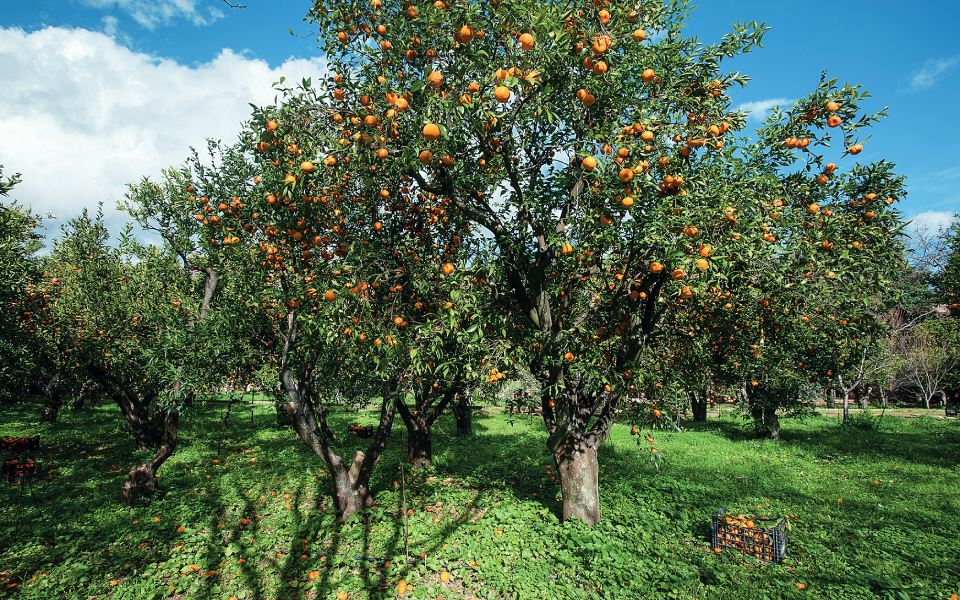
Aromatic Chios Mandarins thriving in the Perleas Groves, Kambos, Chios
© Alexandros Avramidis
In full foliage and heavy with their deep orange fruits, the neranzties, or bitter orange trees, that line the streets of the city in abundance brighten the Athenian winter. With its slender trunk, plentiful fruit, and hardy nature, the bitter orange tree is a great favorite found in public spaces in many towns and cities throughout Greece. They’re much adored, most especially in the spring. Thick with white flowers, the nerantzies in bloom fill the urban landscape with a fresh, heady fragrance.
Today, the nerantzi may be the signature citrus tree of Greece, but there was one that held that position long before it: the citron, or citrus medicus, introduced by Alexander the Great from his campaigns in the east. In his Peri phytōn historia (“An Enquiry Into Plants”), Theophrastus called it the melea persike, the Persian apple, in reference to its origin. He related that the tree was quite thorny, bearing fragrant fruit. Later, Dioscorides described the fruit’s deep golden hue, wrinkled surface, and marvelous aroma, traits for which it’s famous still.
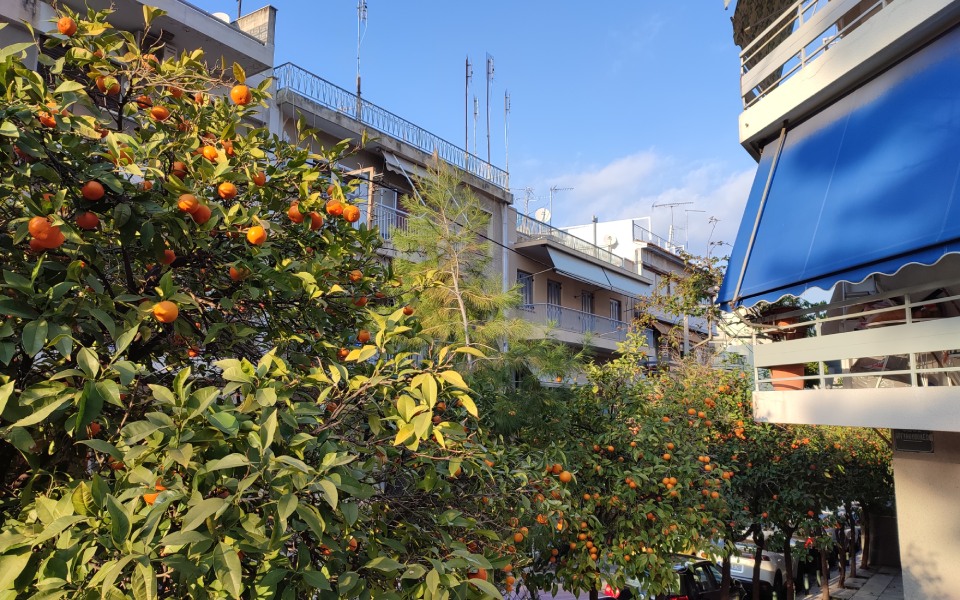
Neranzties heavy with fruit brighten the neighborhoods of Athens
© Amber Charmei
The Greek name for the genus citrus – “εσπεριδοειδή” (es-per-ee-doh-ee-dee) – is inspired by the Garden of Hesperides, famous as a source of the golden apples of mythology. These were a wedding gift from Gaia to Hera, and they were no ordinary apples; they conferred immortality. For his eleventh labor, Hercules needed to procure them; this achievement was a popular subject in art for centuries.
The myth predates the introduction of citron; those golden apples that Hercules had sought were originally depicted most often as quinces. But the more recently discovered citron, with its captivating aroma, came to replace the quince in many depictions over the centuries, as did the orange. By the time of the Enlightenment and the introduction of a more formalized system of taxonomy, the Garden of Hesperides had become linked in the popular imagination to the citron, in part, possibly because of its location: The Hesperides were the ‘daughters of the evening’; within the word esperidoidi is ‘hespera,” as in the Greek greeting kalispera, or “Good evening.” Hesperia denotes lands to the west. (Strangely enough, it was, from the west that the first sweet oranges came to Greece, brought first from India to Portugal by Vasco da Gama; the Greek word for orange, portokali, recognizes this Portuguese connection.)
In markets and at greengrocers across Greece, there’s a selection of fine oranges and lemons throughout much of the year. But the taste of the Mediterranean sun is never bolder than in the specialty citrus fruits available in winter. For a brief period in the peak citrus season – the months stretching from November to late February – some magnificent citrus varieties flourish, lending their inimitable fragrances to signature products and recipes that have stories to tell.
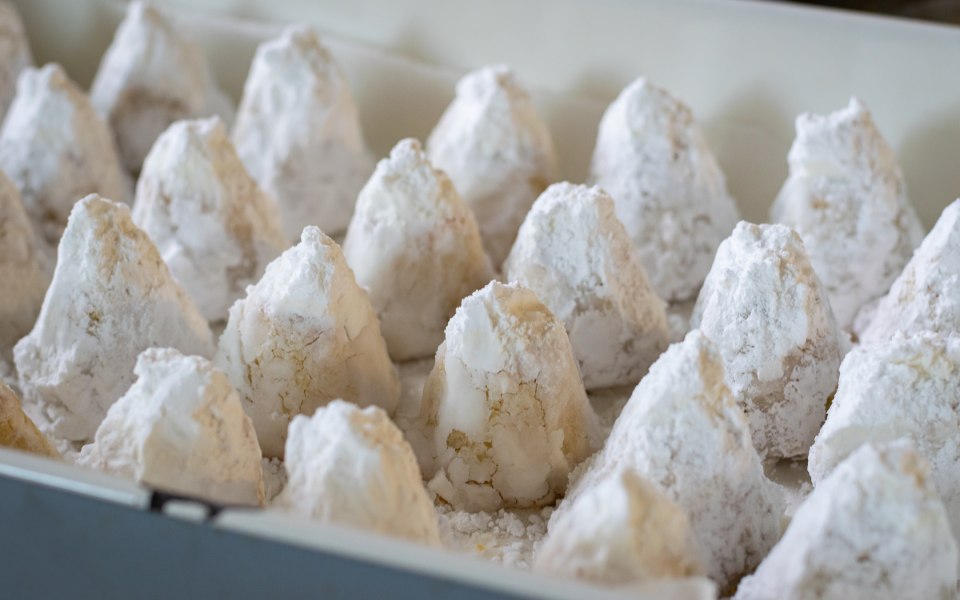
Amygdalota, traditional sweets of almond paste scented with anthonero. are a specialty of many Greek islands.
© Shutterstock
The bitter orange is the queen of Greek citrus fruit for several reasons that go beyond the tree’s key role in beautifying the cities and towns of Greece with its thick green leaves and abundance of bright orange fruit.
That fabled scent of the Athenian spring, the blossoms of the bitter orange in bloom, is known by parfumiers as neroli. It features in Tom Ford’s exclusive fragrance Neroli Portofino. It’s also the base note of a product available in every Greek neighborhood market for a couple of euros. This is anthonero, or “flower water,” distilled principally from the blossoms of the nerantzi. It’s commonly called “orange flower water” elsewhere but, as the Greek name suggests, in this version the aroma comes from a synthesis of several types of blossoms. Those of the lemon, orange, mandarin, bergamot, and citron are all included in the recipe, as is a bit of peel and a small trace of leaf, to create a pleasing complex aroma.
And then there’s the flavor: if you’ve had the amygdalota of Andros, for instance, with their subtle perfume that blooms like spring in the mouth, then you’ve tasted anthonero. It lends its fragrance to many traditional sweets throughout Greece. If you’re trying to recreate the taste of Greece in a dessert at home and it eludes you, anthonero might be the missing ingredient.
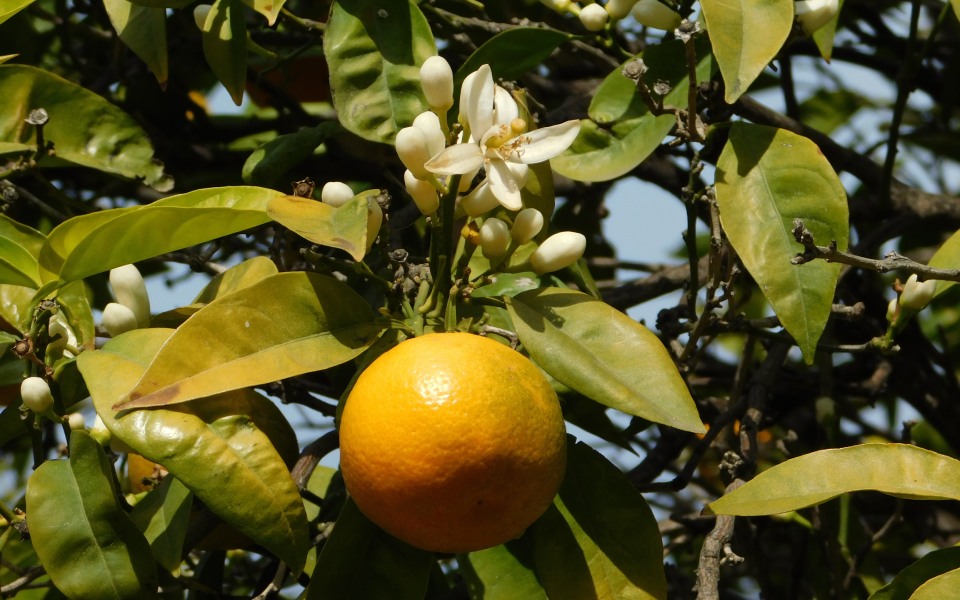
You’ll see bitter oranges tree heavy with fruit seems everywhere you look in the city.
© Shutterstock
Perhaps even more essential is the role that the nerantzi plays in Greek citrus production in general. Citrus trees can have complex identities; a tree can have the root system of one type of citrus and the branches and fruits of another, as most commercially grown citrus trees do. The nerantzi provides a strong and hearty rootstock onto which citruses of other varieties can easily be grafted. This ensures that they flourish, particularly in calcium-rich soil and areas with high pH levels, to which the nerantzi is ideally suited. It’s one of several graft trees used for its resilient root system.
Stavroula Liontou, of the Regional Laboratory of Agricultural Applications and Fertilizer Analysis of Xylokastro, in the prime citrus-growing region around Corinth, calls the nerantzi “politimo” or “precious,” because of its rootstock. She explains that soil analysis reveals the ideal choice for rootstock, regardless of what fruit the tree’s branches may bear: “One might have a lemon tree with citromelo roots, or a bergamot with the roots of a cleopatra mandarin.”
The rootstock won’t affect the flavor of the fruit. But the fruits of the neighboring branches on the same tree might; it’s possible to graft more than one type of citrus onto the same root stock. “If you have a small garden, for example,” says Liontou, “you could have a tree that gives you both lemons and oranges. The oranges might, however, be a little tangier than those that grow on their own dedicated trees, and the lemons may in turn take on a bit of the fragrance and sweetness of the orange.”
You’ll see bitter oranges tree heavy with fruit seems everywhere you look in the city. But don’t be tempted by these – urban fruit absorbs the exhaust from vehicular traffic and is unsuitable for consumption. If you get some nerantzia from the countryside, you’ll find that they’re ideal for marmalade, which is how they’re most appreciated in the UK. One of the most traditional preserves makes use of the unripe fruits, gathered when they’re still green and little smaller than a walnut, to make neranzakia, or “little bitter oranges.”
Intensely aromatic, the sour juice of the nerantzi is excellent in marinades, or for adding brightness to savory dishes where you would normally add lemon.
The easiest way, however, to enjoy the essence of the nerantzi is to pick up a bottle of anthonero to scent anything you like. To keep the taste bright and fresh, use it after cooking or baking, not before, by misting it directly onto your baked goods or puddings.

In the Citrus Museum of Chios, a display of decorative wrappers for exporting Chios Mandarins from the 1930s.
© Citrus Museum of Chios
Greece’s first citrus fruit is now among its rarest, except on the island of Naxos, where it has been cultivated for centuries. The citron was introduced to Naxos in the 17th century, likely by the local Jewish community, who prized it. The island’s soil and weather conditions are ideally suited to the production of quality citron, and it became an important crop for the local economy. As early as the end of the 19th century, Naxos citron was being exported to Jewish communities abroad – the citron plays an essential role in the Jewish harvest festival Sukkot.
Citrons also became an important crop for the local culture of Naxos. Irini Fragoudaki, of the family-owned Vallindras Kitron distillery, producers of the PDO liqueur Kitro of Naxos since 1896, shares their special significance for Naxians: ”People have an emotional connection to citrons here. And citrons need that connection, that affection and that care, to survive.” While the soil and climate are just right, citrons still need vigilant tending: they need lots of water; they can never get too cold; and they hate the wind. “We grow walls of reeds to protect them.” Then, there’s the arduous harvesting, avoiding the citron trees’ famously sharp thorns while gathering the ripe fruit in the coldest months of the year.
They’re worth all the attention. These impressive, heavy fruits – weighing as much as two kilos – have an absolutely beguiling perfume. Some of them will be used locally for specialties such as marmalades and preserves. But most will be exported, primarily to Jewish communities abroad; the Fragoudaki family ships as many fruits as they can produce. What’s left over for distilling the fragrant Kitro of Naxos liqueur? As interesting as these strange fruits are, it’s actually the leaves, so rich in essential oils, that star in Naxos’ signature citron application.
The citron’s zest, although intensely bitter, is full of aromatic oils. You want some, but not too much – remove about half of the zest before using the thick, fragrant white rind beneath for a preserve or marmalade.
Perhaps the easiest and most enjoyable way to use citron is to pick up a bottle of Kitron of Naxos to sip on its own or use in cocktails. Here are some recipes for cocktails using traditional Greek spirits to get you started.
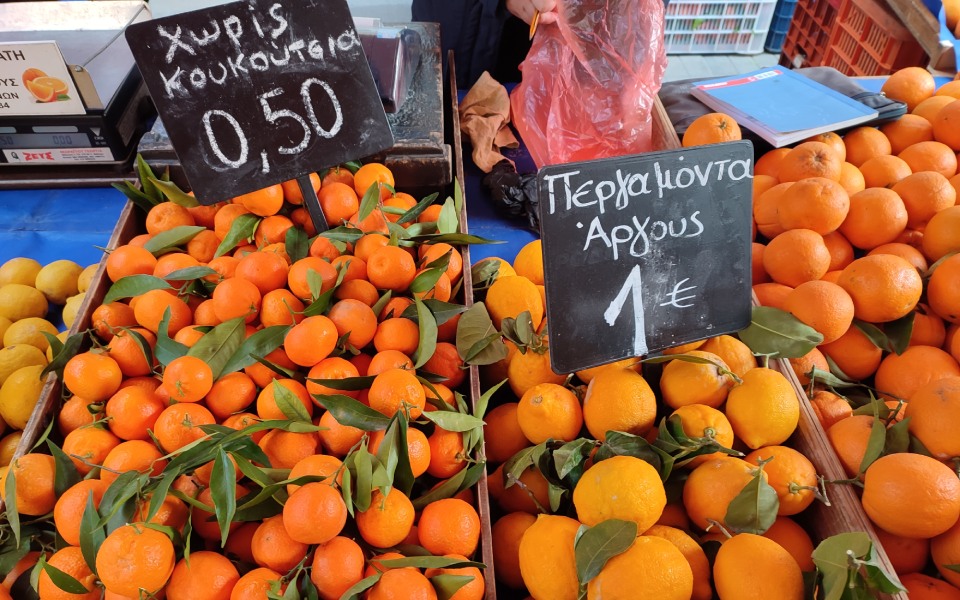
Fragrant bergamots from Argos aglow at the Kallidromiou weekly market ("laiki") in Exarchia, Athens
© Amber Charmei
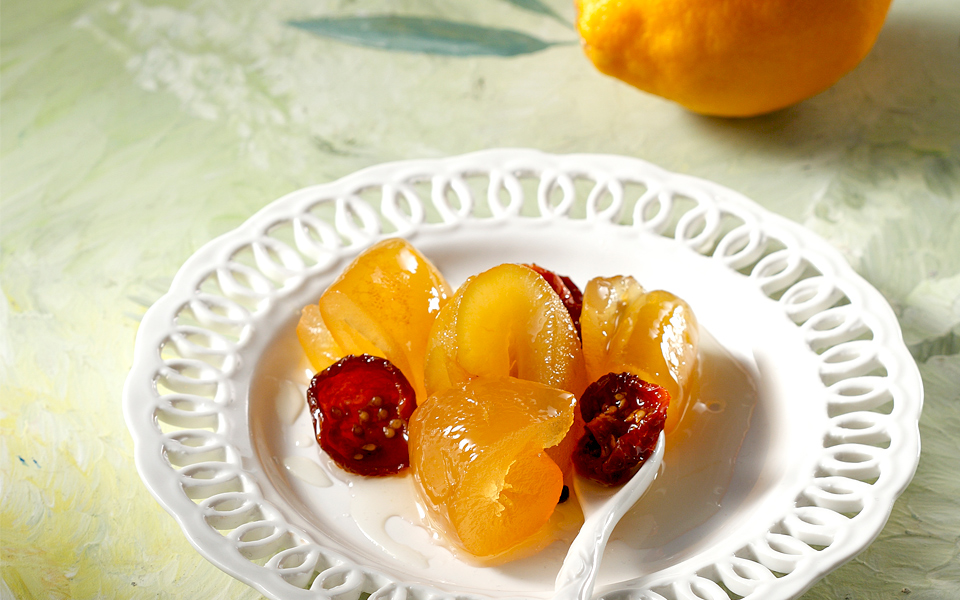
Bergamot with sun-dried tomatoes and honey
© George Drakopoulos
The classic trinity of essences used in traditional sweets, such as loukoumia (Turkish delights), is an exotic one here in the eastern Mediterranean: masticha (the refreshingly piney resin from the Pistacia lentiscus of Chios), rose, and bergamot – known to many primarily for its role in perfumes.
The essence of the bergamot is bold, but it’s by no means obvious. Sophisticated, elusive, complex, it’s like nothing else in the citrus world.
The bergamot of Greece, unlike its smoother and greener cousin from Calabria, is deep golden yellow, wrinkled and bumpy, and oblong like a lemon, but a little larger. Nearly all their aroma is in the zest, adding its flavor to cakes, sweets, and liqueurs. The white rind beneath is thick and bitter, and the flesh is dense, with little juice. It takes a little finessing to get the most out of the fruit and keep that complex bitterness under control. But the bergamot rewards your attentions with its intriguing aroma.
Bergamots last a very long time at room temperature and, since they’re not always easy to find, it’s worth picking some up whenever you spot them. They look great stacked high in a fruit bowl, perfuming the room.
The grated zest makes a novel addition to a cake or a homemade spirit: a couple of strips of zest that have been steeping for a week or so will nicely perfume a little tsikoudia, for example. Whole pieces of peel can be candied, or made into a glyko koutaliou, or preserve, like this Bergamot with Sun-dried Tomatoes and Honey.
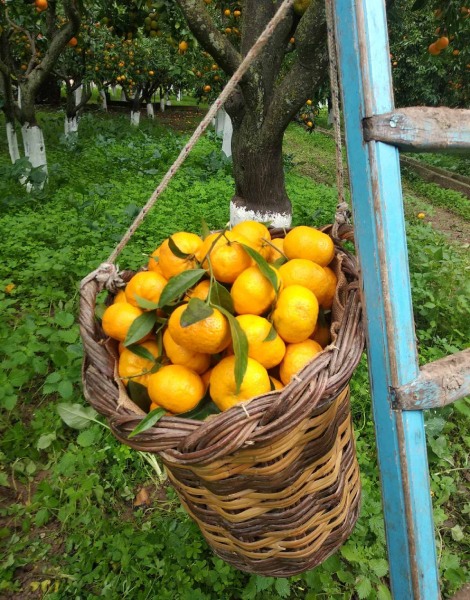
A basket of Chios mandarins in the Kampos.
© Perleas Traditional Guesthouse and Orchards
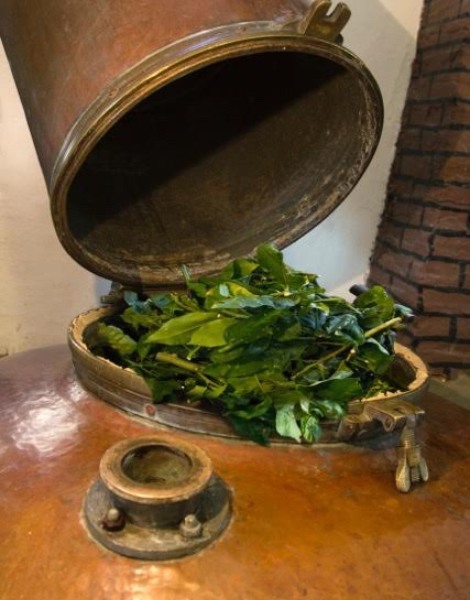
The Vallindras Kitron Distillery has been using the leaves of the citron tree to create the uniquely aromatic liqueur Kitro of Naxos since 1896.
© Vallindras Kitron Distillery
The Latin name of this fabulous citrus clues us in on what to expect: the Chios mandarin is indeed delicious. Rather pale in color compared to its seedless cousin the clementine, this special mandarin variety announces itself with a marvelous scent.
Mandarins were the last of the citrus family to reach Europe. In 1805, Sir Abraham Hume had seedlings sent from Canton, China, to England. They then made their way to Malta, where they flourished and spread throughout the rest of the southern Mediterranean.
But the story of the finest mandarin of them all, the unique Chios mandarin, starts later; in 1860, the first of the Citrus deliciosa ‘Tenore‘ arrived on Chios directly from China. They have become part of the identity of island, thriving for generations in ideal microclimates behind stone walls centuries old in the area known as Kampos, a paradise of traditional mansions surrounded by flourishing citrus groves. Vaggelis Xydas is part of their story, overseeing his family orchard Perleas and serving as director of the Kampos’ Citrus Museum. “Here, in the calcium-rich soil of Kampos, under careful tending, this mandarin from the far east found its fullest expression. They had an incredible fragrance, and our island soon became well known for them.” The Citrus deliciosa ‘Tenore’ of Chios rose quickly to prominence in Europe; wrapped individually in decorative tissues to preserve their signature scent, the mandarins of Chios became a prized luxury export. They now have a European PGI, which means that in order to bear the name commercially, Chios mandarins must be grown on Chios or on the neighboring islets of Oinousses and Psara.
Their season lasts from the end of November to late February. It’s easy to find them at the market – their intense, compelling perfume distinguishes them from their neighbors.
On Chios, they star in marmalades and fragrant preserves, and they’re also wonderful to eat as they are, even with their many seeds; ripping the peel from them is one of the pleasures of winter, as they release a sunny burst of essential oils into the air. The intensely aromatic peel makes an intriguing substitute for lemon or orange zest in any recipe. On Chios, they use a little to brighten a tomato sauce. Chios mandarins also shine in this marvelous mandarin orange cake, which makes use of the entire fruit.
Explore Corfu’s once-forgotten vineyards and discover...
Your summer map to Ios: what...
This article explores four cozy Greek...
This recipe comes from Germanos Christianopoulos,...